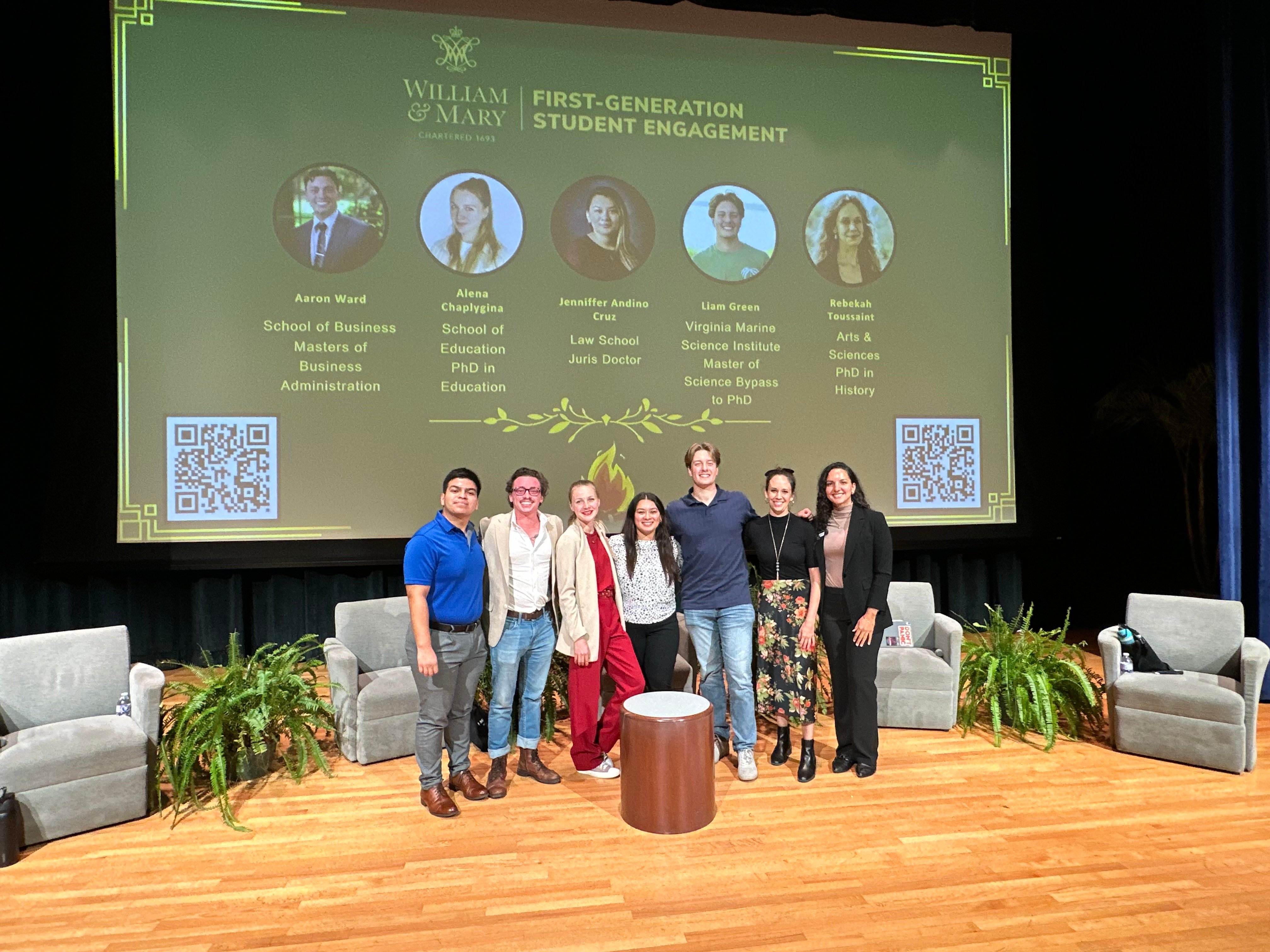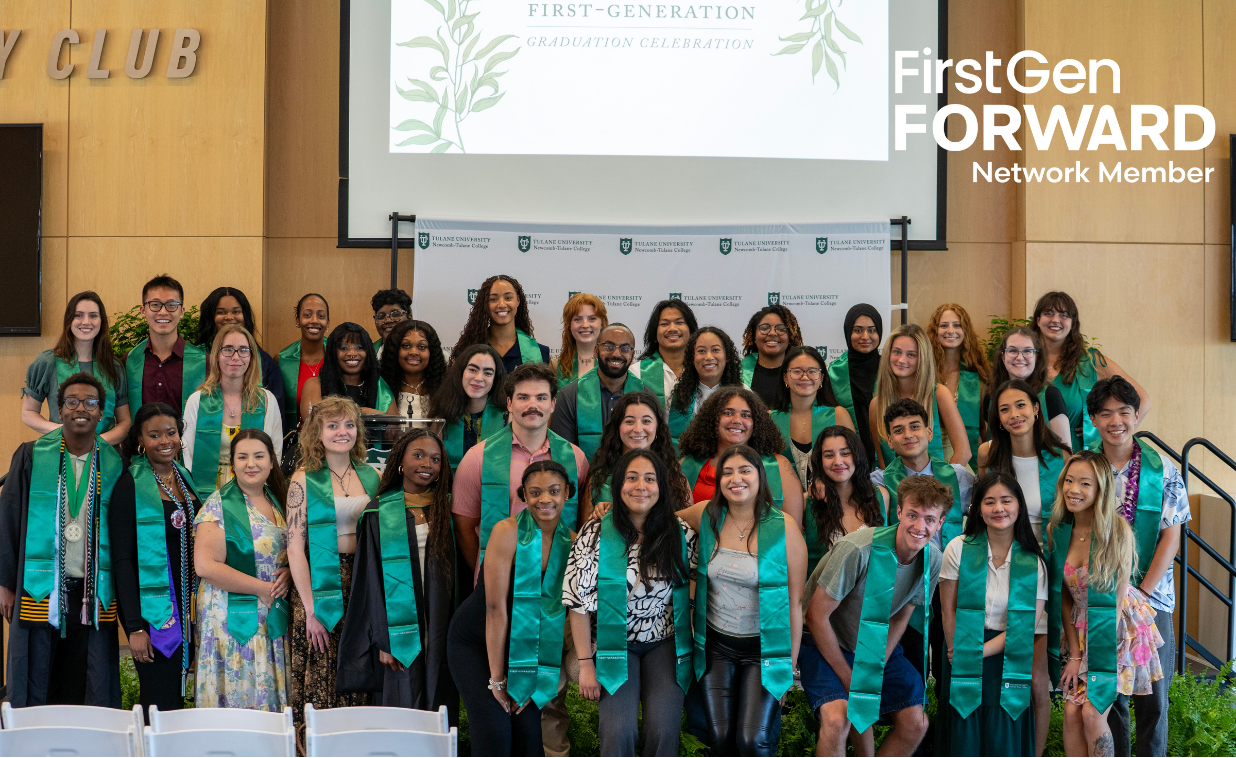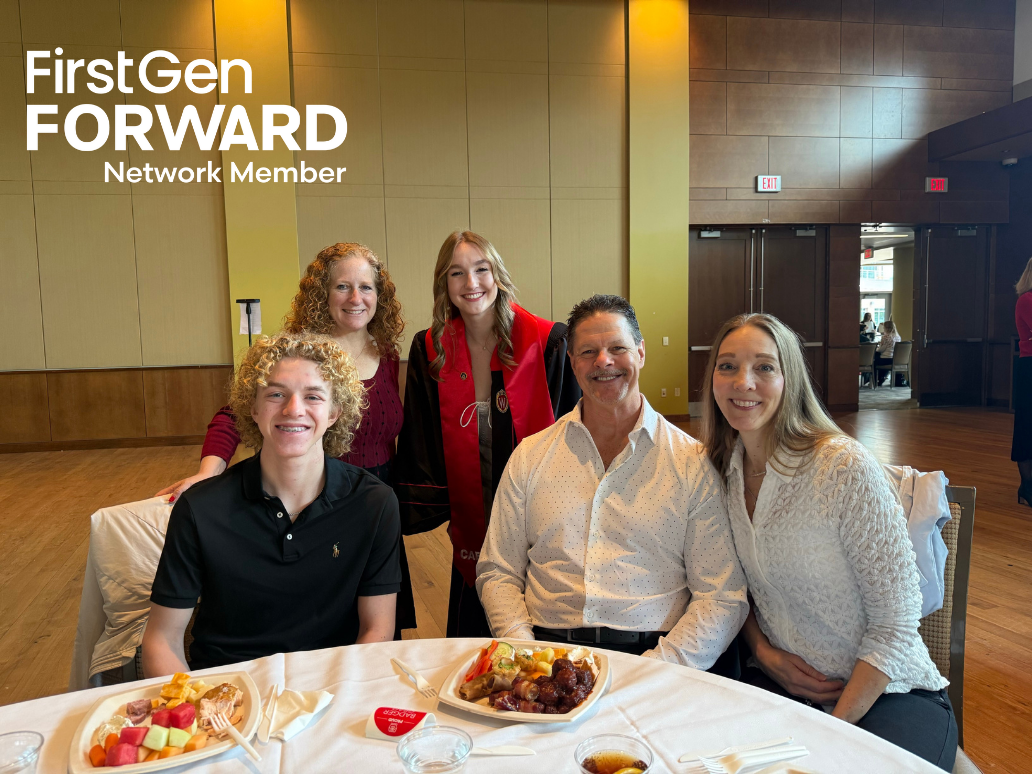From Isolation to Institutional Change
When Orley Estrada first arrived at William & Mary in 2019, the university had one of the lowest Pell‑eligible student populations and acceptance rates of First Generation and Limited Income (FGLI) students in Virginia (Virginia General Assembly, 2019; Will, 2017).
“I immediately felt the weight of being socioeconomically isolated, especially compared to my peers who came from backgrounds with higher social capital,” Estrada recalls. “It was in this isolation that I found my purpose in the FGLI student organization: First‑Generation, Limited‑Income students, now called Limited Income & First‑Generation Tribe (LIFT).”
From this moment of isolation grew a student‑led movement that helped reshape institutional culture at W&M. As Estrada immersed himself in the FGLI community, student leadership and institutional acknowledgment began to converge. By his sophomore year, he was co‑president of FGLI and played a central role in advocating for a full‑time administrator dedicated to first‑generation student success—a recommendation that led to the creation of the Office of First‑Generation Student Engagement (OFGSE). This transformative step was made possible through the generosity of the William & Mary Class of 1972 50th Reunion Class Gift, which funded the position and provided resources to launch the office.
“Looking back, I went from a shy, isolated freshman to an empowered student leader who worked with institutional key players to bring about real change.” -Orley Estrada
Estrada served as the Graduate Assistant for the OFGSE, working alongside Director Souza to support data‑informed initiatives, mentor undergraduate student leaders, and assess the ongoing needs of W&M’s first‑generation population. Without his early advocacy and continuing partnership, the office’s vision might have remained an idea championed by one administrator rather than a movement powered by many.
William & Mary’s Commitment to First‑Generation Student Success
William & Mary’s first‑generation undergraduate population currently represents approximately 11% of its student body (Office of Institutional Research, 2024). Under the leadership of President Katherine Rowe, the university has made a public commitment to expanding access and equity, including a pledge that 20% of in‑state undergraduates will be Pell Grant recipients within four years. Beginning with the 2023‑24 year, W&M will guarantee scholarship aid to cover at least tuition and fees for all in‑state Pell Grant recipients (W&M News, 2022).
These institutional commitments reflect a growing recognition that supporting first‑generation and limited‑income students is not peripheral—it is integral to the mission of public higher education. The establishment of the OFGSE has enabled W&M to take a systemic approach: combining research, assessment, and relationship‑building to foster belonging and persistence among first‑generation and scholars.
The Role of Mentorship in Shaping First‑Gen Success
Mentorship has been a defining theme in Estrada’s journey and in the broader work of the OFGSE. His story illustrates how relationships grounded in trust and shared experience can transform both personal and professional development.
“The saying ‘It takes a village to raise a child’ perfectly captures my journey of growth and leadership at W&M,” Estrada writes.
As an undergraduate, Estrada benefited from two key mentors: a FGLI W&M alumnus who earned a doctorate in education and reached out before he arrived on campus, and a faculty advisor who helped him navigate academic complexities. Their mentorship anchored his sense of belonging and guided him toward leadership with FGLI.
Souza observes that Estrada’s story exemplifies what research consistently supports: structured mentorship is one of the strongest predictors of retention and persistence for first‑generation students (Crisp & Cruz, 2009; Tinto, 2017). Mentorship fosters mattering, academic confidence, and social integration—factors essential to student success.
The OFGSE’s approach draws from Sanford’s (1966) Theory of Challenge and Support, emphasizing that students thrive when institutions balance high expectations with intentional guidance.
“As a FGLI student and a Latinx scholar, I have often found myself in predominantly White spaces, both in higher education and the professional world,” Estrada reflects. “My graduate assistantship under the Director of the Office of First‑Generation Student Engagement has been invaluable in preparing me for these realities.”

Building a Strong Foundation for Mentorship: The Griffin Mentorship Program
The Griffin Mentorship Program—originally launched as the FGLI Mentorship Program under Student Transition Engagement Programs (STEP)—has become a cornerstone of W&M’s support for First Gen students. Rebranded to align with W&M’s mascot, the Griffin, the program symbolizes strength, guardianship, and connection.
“This shift not only reflects the university’s commitment to inclusivity,” Estrada explains, “but also emphasizes the program’s pivotal role in connecting FGLI students with alumni, administrators, and faculty who share similar experiences.”
Through One Network, the university’s alumni engagement platform, students connect with mentors across disciplines and backgrounds. Estrada has supported the continued growth of the program as part of the OFGSE team, helping refine outreach and connection strategies that sustain mentor engagement.
While Souza has been the architect and driving force behind W&M’s first‑generation programming, she underscores that collaboration with students—including Estrada—has been vital: “This work has always been a collective effort. Without the involvement of student voices, it would not have the authenticity or impact it does today.”
“Watching the Griffin Mentorship Program grow has been nothing short of inspiring,” Estrada writes. “What started as a much‑needed initiative when I first arrived at W&M has now become a thriving, invaluable resource for FGLI students.”
Structured mentorship has been shown to significantly enhance first‑generation students’ academic engagement and psychosocial development (Crisp & Cruz, 2009). The Griffin Mentorship Program provides a model for how institutional resources can be intentionally aligned with student‑driven insight—an approach that has become a hallmark of the OFGSE.
Bridging Advocacy and Administration
Through his role as Graduate Assistant, Estrada has helped strengthen the connection between the LIFT student organization and the OFGSE’s institutional mission. Together, they coordinate initiatives such as First‑Generation College Celebration Week, First Gen Fridays, and The First Gen Leadership Summit—each designed to foster belonging, recognition, and community leadership.
“As a graduate assistant, I’ve had the privilege of joining Director Souza and our dedicated undergraduate LIFT student leaders to celebrate the incredible achievements of our FGLI community,” Estrada notes.
Souza emphasizes that these programs are more than celebrations—they are crucial for identity affirmation and campus‑wide culture change. The student‑administrator partnerships that sustain these programs are vital to the long‑term success of first‑generation engagement at W&M.
Why This Work Matters
The efforts of the OFGSE and LIFT reflect a broader shift in higher education toward equity and belonging as fundamental components of student success. For first‑generation and limited‑income students, social capital, mentoring, and community validation are just as essential as academic preparation (Tinto, 2017).
“Looking back on my journey at W&M,” Estrada writes, “I’m incredibly proud of the strides I and the OFGSE have made to create a more inclusive and supportive environment for LIFT students. Yet, I know the work is far from over.”
Souza emphasizes that this work extends beyond individual transformation—it redefines institutional culture. What began as student advocacy has become a university‑wide strategy for retention, leadership development, and inclusive excellence.
This commitment to access and equity aligns with William & Mary’s mission to “inspire lifelong learning, generate new knowledge, and expand understanding” within a vibrant and inclusive community, ensuring that every student—regardless of background—has the opportunity to flourish (William & Mary, n.d.).
“The work we’ve done at W&M has been a powerful foundation,” Estrada concludes, “and we are determined to build on it as we work towards a larger goal: to ensure that every student feels empowered to succeed and to pave the way for future leaders who will continue to advocate for and support this community.”
Conclusion: A Collective Legacy
The partnership between Estrada and Souza reflects a full‑circle narrative of student advocacy evolving into institutional leadership. Together, they continue to cultivate a university ecosystem that recognizes first‑generation identity as a strength rather than a barrier.
As William & Mary strives toward its vision of increased access, equity, and social mobility, the work of the OFGSE stands as a testament to what is possible when students and administrators co‑create lasting change—rooted in mentorship, belonging, and shared purpose.
References
Crisp, G., & Cruz, I. (2009). Mentoring college students: A critical review of the literature between 1990 and 2007. Research in Higher Education, 50(6), 525–545. https://doi.org/10.1007/s11162-009-9130-2
Office of Institutional Research. (2024). Undergraduate student demographics: First‑generation enrollment. Williamsburg, VA: William & Mary.
Sanford, N. (1966). Self and society: Social change and individual development. Atherton Press.
Tinto, V. (2017). Through the eyes of students. Journal of College Student Retention, 19(3), 254–269.
Virginia General Assembly. (2019). Annual report on the progress of Virginia public higher education institutions in meeting the Commonwealth’s 2030 enrollment goals. https://rga.lis.virginia.gov/Published/2019/RD441/PDF
Will, C. (2017, November 15). W&M enrolls greater number of Pell‑eligible students in class of 2021. William & Mary News. https://www.wm.edu/news/stories/2017/wm-enrolls-greater-number-of-pell-eligible-students-in-class-of-2021.php
William & Mary. (n.d.). Vision, mission, and values. https://www.wm.edu/about/leadership-values/vision-mission-values/
William & Mary News. (2022, September 23). W&M commits to cover full tuition and fees for all in‑state Pell Grant recipients. William & Mary News. https://news.wm.edu/2022/09/23/wm-commits-to-cover-full-tuition-and-fees-for-all-in-state-pell-grant-recipients/
For more information on the William & Mary approach, please visit their website here.
.png)

